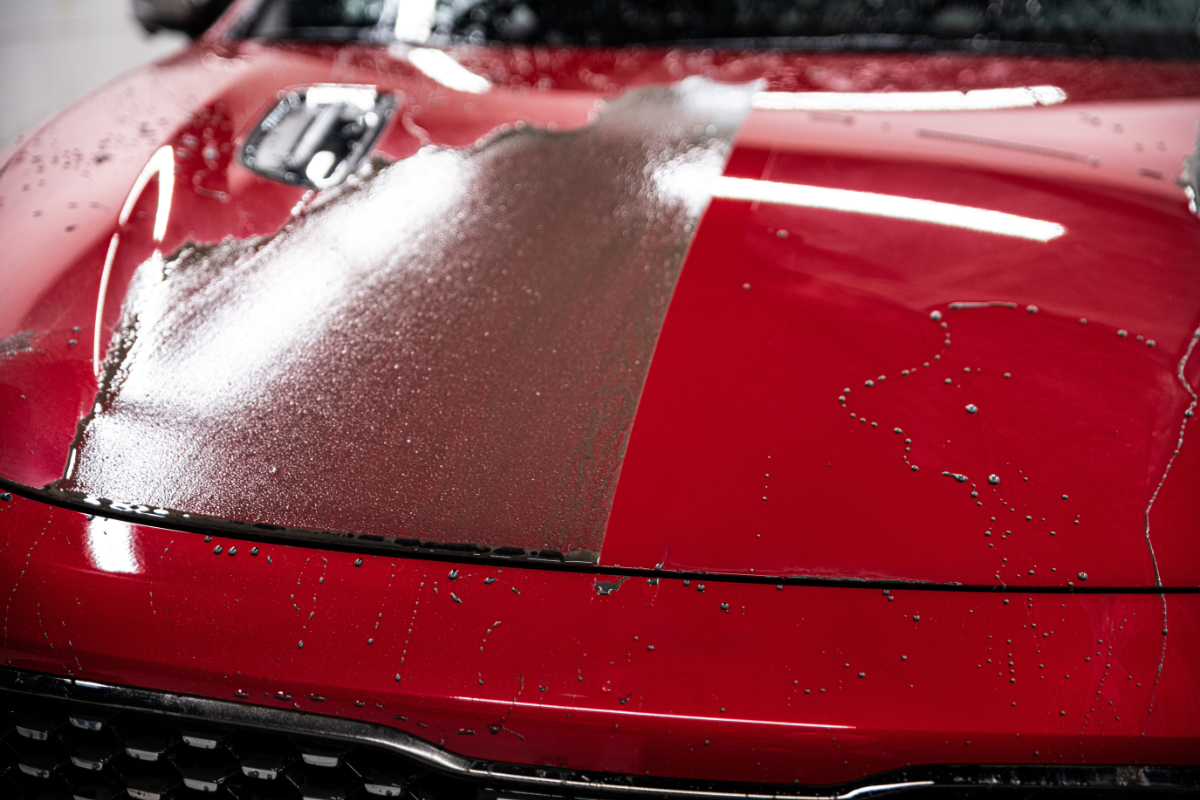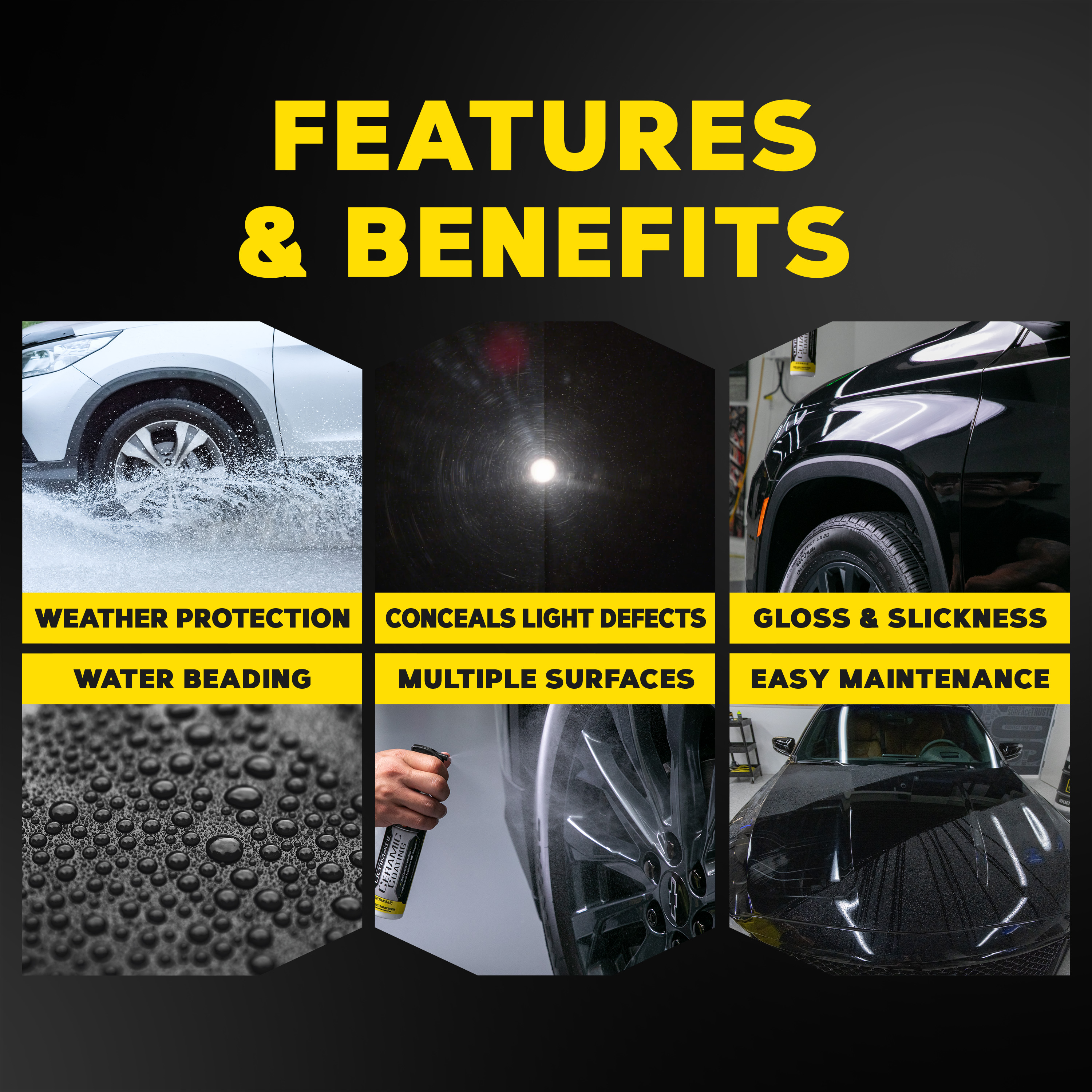Why Ceramic Layer Is the Ultimate Remedy for a Perfect Finish
Ceramic finishing has arised as a leading solution for those seeking a flawless finish for their automobiles, thanks to its remarkable durability and protective functions. What elements really set ceramic finish apart?
What Is Ceramic Layer?

When used correctly, ceramic layer develops a hydrophobic surface area that pushes back water and dust, making it simpler to clean and keep. Unlike traditional waxes or sealers, which generally provide short-lived defense, ceramic finishings can last for a number of years, depending upon the product top quality and application method. The procedure of using ceramic coating calls for careful preparation, including comprehensive cleansing and often repaint modification, to ensure optimal bonding and performance.
Ceramic finishings are not limited to automotive surfaces; they can also be made use of on different materials, including glass, steel, and plastics, providing a versatile service for improving defense. Overall, ceramic covering represents a significant improvement in surface area security innovation, combining both visual and practical benefits for a large range of applications.
Advantages of Ceramic Covering
While several surface area security alternatives exist, the advantages of ceramic coating stick out due to its one-of-a-kind residential or commercial properties and durable efficiency. Among the key advantages is its remarkable resilience. Ceramic Coating Philadelphia. Unlike conventional wax or sealants that call for frequent reapplication, ceramic coatings give a durable layer that can last for a number of years, significantly decreasing maintenance initiatives
Another remarkable advantage is enhanced protection against environmental contaminants. Ceramic coatings develop a hydrophobic surface that fends off water, dust, and different toxins, making it much easier to cleanse. This feature not only protects the lorry's appearance yet likewise decreases the danger of rust and oxidation, particularly in severe climate condition.
In addition, ceramic finishes provide premium resistance to UV rays, protecting against fading and deterioration of paint over time. This UV defense is crucial for preserving the aesthetic value of surface areas and cars exposed to route sunshine.
Additionally, the shiny surface attained with ceramic coating enhances the overall visual charm, providing surface areas a showroom-quality sparkle. On the whole, ceramic finishes stand for a considerable development in surface protection modern technology, providing long-lasting advantages that satisfy both useful and visual requirements.
Just How It Functions
Understanding the science behind ceramic coatings exposes how they supply such exceptional protection and longevity. At its core, a ceramic coating is a fluid polymer that chemically bonds with the lorry's manufacturing facility paint. This bonding creates a safety layer that is both hydrophobic and oleophobic, repelling water, dust, and oil. The primary component of a lot of ceramic finishes is silicon dioxide (SiO2), which is stemmed from quartz. This substance adds to the finish's firmness and resistance to scratches, UV rays, and ecological impurities.
The application procedure includes numerous steps, consisting of surface area prep work, which is essential to attaining optimum bond. As soon as used, the finish undergoes a healing procedure, during which it hardens and creates a semi-permanent bond with the paint surface. This bond is what differentiates ceramic layers from standard waxes and sealants, giving a longer-lasting safety barrier that can withstand for several years.
In addition, the density of the layer can enhance its safety qualities, guaranteeing that it can endure extreme conditions. Eventually, the science of ceramic finishes incorporates advanced products with innovative application methods to supply an exceptional degree news of security and aesthetic improvement for lorries.
Contrast With Standard Techniques
When contrasted to typical paint defense techniques such as sealants and waxes,The benefits of ceramic finishings end up being specifically evident. While waxes supply a short-term shine, generally lasting a few weeks to a couple of months, ceramic finishes supply a durable safety layer that can withstand for numerous years. This longevity dramatically decreases the frequency of reapplication, making ceramic finishes a much more affordable service gradually.
Additionally, conventional techniques typically need considerable preparation and several applications to achieve an adequate level of defense. On the other hand, ceramic layers bond at a molecular level with the car's surface, developing a durable shield against ecological pollutants like UV rays, acid rain, and road salts. This bond enhances the lorry's resistance to scrapes and swirl marks, which prevail with standard waxes and sealants.
Additionally, the hydrophobic residential or commercial properties of ceramic finishes repel water and dirt, causing easier cleaning and maintenance. On the other hand, wax and sealant-treated surface areas can draw in grime, demanding even more regular cleaning - Ceramic Coating Philadelphia. Generally, ceramic coatings not just supply premium defense yet likewise provide a more aesthetically enticing and long-lasting coating, establishing them as the favored choice for discerning car proprietors
Application and Upkeep Tips

Using a foam applicator, apply the layer in little sections, complying with the maker's guidelines regarding thickness and overlap. Enable sufficient healing time between coats, typically 24-hour, to make sure correct bonding. After application, it is critical to avoid exposure to water or extreme aspects for a minimum of a week to allow the covering to completely treat.
Furthermore, making use of a ceramic maintenance spray can boost the finishing's hydrophobic buildings and durability. Normal evaluations for any type of indications of wear will help preserve the layer's stability and protect that beautiful finish.
Verdict
To conclude, ceramic covering becomes a remarkable alternative for achieving a remarkable automotive coating. Its phenomenal durability, safety qualities, and hydrophobic buildings substantially improve the vehicle's look while simplifying maintenance initiatives. By developing a robust bond with factory paint, ceramic covering efficiently shields against scrapes, UV rays, and environmental impurities. With a lifespan expanding numerous years, this innovative option not only preserves however additionally elevates the overall visual charm of cars, making it an affordable financial investment for vehicle enthusiasts.
